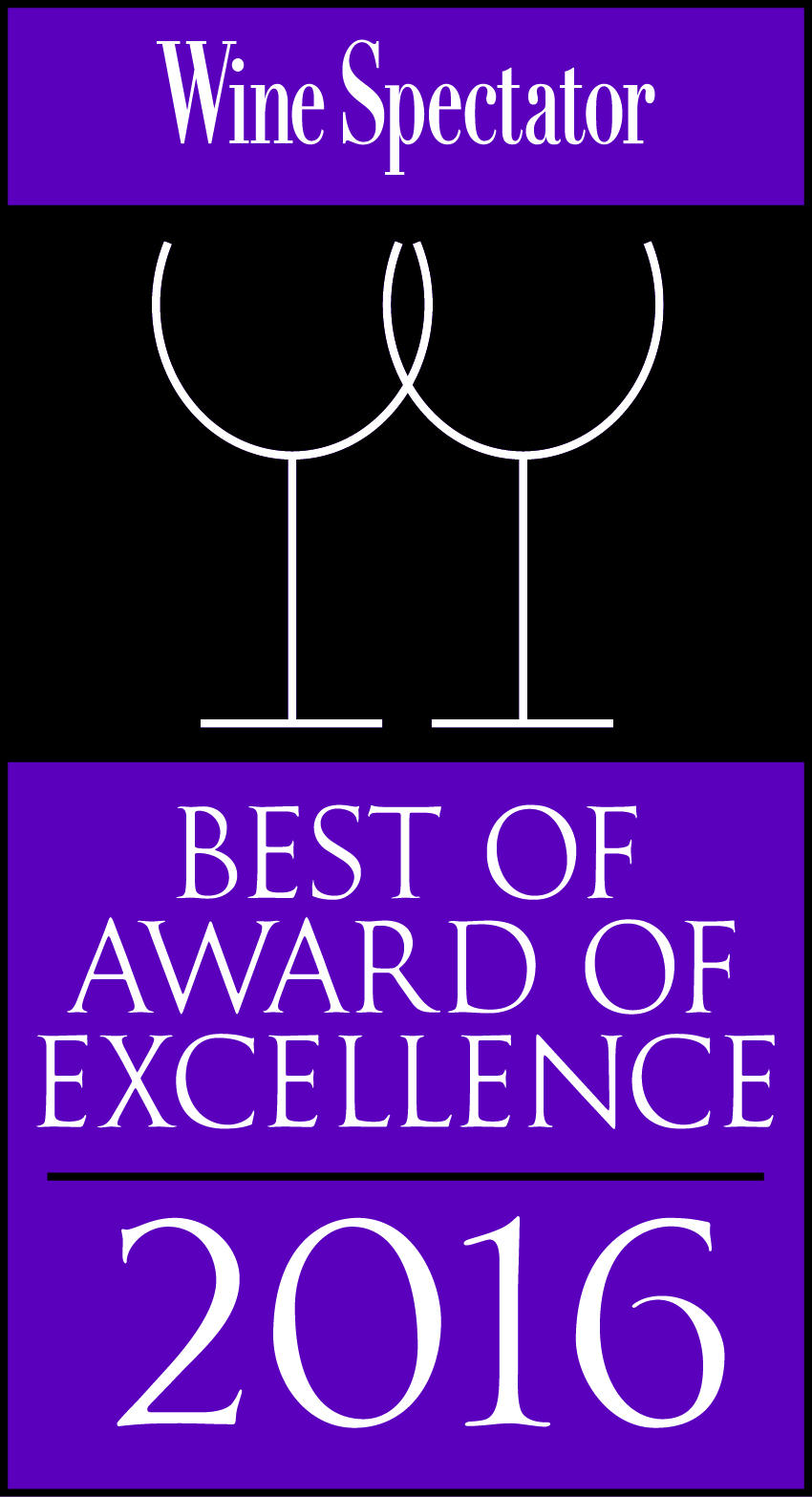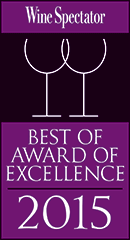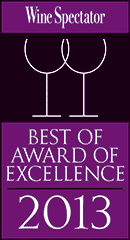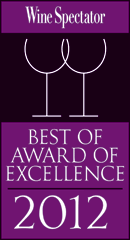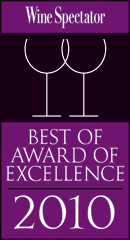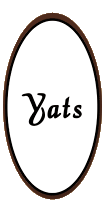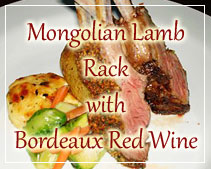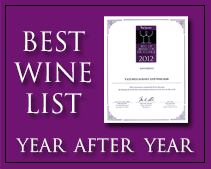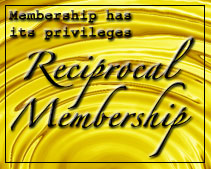Wines from Touraine, Vouvray and Montlouis in Loire Valley of France
December 21, 2010
About Wines from Loire Valley of France
Best wine supplier in Philippines discusses wine related topics
Touraine Part 1
Although it is possible to reach the vineyards of Chinon, Bourgueil and Vouvray from Saumur with a comfortable drive, it may be just as convenient to set up camp in Tours itself. This is a wonderful city, the centre bustling with life and activity, and the Old Quarter has a glorious charm. There are many hotels in this section, so one can really soak up the atmosphere of the old town, whilst keeping the vineyards of Vouvray, just to the east, and Chinon and Bourgueil, to the west, within easy driving distance.
Vouvray
Abandon hope, all ye who enter here. Well, abandon hope of finding the particular domaine you are searching for within a reasonable amount of time, anyway. Vouvray does not have the swathe of housing and industrial suburbs that Tours possesses, yet this small town will confuse the unwary traveller just as much as any great city. On my most recent to Domaine Huet, having reached the town it took me at least another forty frustrating minutes to locate the property, which is on a hill running up towards the vineyards above the town just before Domaine du Clos Naudin, some considerable distance from where my map told me they were located. This inability to locate Huet is a regular component of any trip to Vouvray, and yet on my next sojourn here I found Huet immediately; unfortunately this time I was hunting for Domaine Aubuisières. After a fruitless search I gave up and visited Catherine & Didier Champalou instead, who subsequently gave me directions on to Bernard Fouquet’s cave, which I discovered on a back street near the centre ville, again some distance from where my map was directing me. After that I threw the map away.
The streets of Vouvray may seem designed to confuse and disorientate, but that should not discourage us from exploring the town through its wines. In the eyes of many they are the Loire’s greatest, and this vinous reward is well worth even an hour of luckless driving, looking stupid and lost. Whether considering the dry minerality of the sec wines, the exquisite balance of a demi-sec, or the fabulous intensity and complex flavour of an aged moelleux, Vouvray is the greatest appellation of this section of the Loire. Some might say it is the greatest appellation of all the Loire. The wines have great longevity, displaying fabulous richness and complex flavours with advancing age, and from a great vintage such as 1947 some, such as the Huet Le Haut Lieu Moelleux, have taken on an almost mythical status. And even when mature, many of the wines (although not the 1947s!) remain comparative bargains. It is no accident that almost half of all the Loire wine in my cellar is Vouvray, more than any other single appellation.
The Vouvray vineyards, which lie on the slopes and plateau above the town, are ancient; St Martin de Tours, who established a monastery at nearby Marmoutier, is credited with their creation in the 5th Century. Having said that, some also credit this bishop of Tours with the discovery of pruning, following his observation of a donkey chewing on the vines. Perhaps these two fanciful tales are over-simplifications? Whatever their origins, today the vineyards lie across eight communes around (and including) Vouvray, the appellation boundaries having been defined in 1936. The terroir underfoot is tuffeau chalk bedrock covered with clay soils containing areas of flint and sand, and the wines that spring forth are 100% Chenin Blanc, and come in a range of styles, from sec to moelleux, where the rendement de base is 52 hl/ha, as well as pétillant and mousseux, where the rendement de base is 65 hl/ha. The rendement de base is, however, just a guide, and maximum yields are in fact higher than these figures might otherwise suggest. Appellation regulations also stipulate minimum must weight – 153 g/l for the still wines and 136 g/l for sparkling styles – and final alcoholic strength is also regulated. The INAO does not, however, furnish the winemaker with minimum sugar concentrations to define sec, demi-sec or moelleux, and so these terms are open to wider interpretation. European Union agricultural policy does provide guidance on their use, however, although they do not marry well with what is actually bottled in the Loire, and in fact the EU figues (sec, for instance, is 17-35 g/l of residual sugar) make no sense to me whatsoever. There is, of course, more to sweetness than sugar, as the acidity and balance of a wine has a huge impact on how sweet the wine is perceived to be on the palate, but these figures at least give a little guidance. The only real way to understand Vouvray, though, is to taste it and drink it, a practice I wholeheartedly recommend. Or, of course, you could visit the vineyards themselves. Just make sure you leave plenty time to find your chosen domaine.
Vouvray Definitions
Sec: dry wines, typically 3-5 g/l of residual sugar.
Sec-tendre: not a designation you will find on a label, but a useful if ill-defined term to describe a style just leaning towards off-dry, but not at the level of a demi-sec. The residual sugar is typically 4-15 g/l.
Demi-sec: literally ‘half-dry’, although maybe ‘half-sweet’ would be a better way to think of it. It is fair to say that this is probably Vouvray’s most ‘natural’ wine. A typical Vouvray demi-sec would have 10 – 20 g/l of residual sugar.
Moelleux: sweet wines, defined by the EU as being over 50 g/l. Typical moelleux wines from Vouvray would contain upwards of 45 g/l of residual sugar, and although many would come in at less than 100 g/l, some may more than double this figure.
There are many worthy estates, but the leaders of the pack include the occasionally elusive Domaine Huet now run by son-in-law Noel Pinguet with financial backing from overseas, Bernard Fouquet at Domaine des Aubuisières and the Foreau family at Clos Naudin. The wines produced by Didier and Catherine at Domaine Champalou can also be very good but tend to be in a lighter, more floral style, especially when young. Also look out for Marc Brédif, Chateau Gaudrelle, François Pinon and François Chidaine, a Montlouis viticulteur who has now taken over the running of the vineyards of Prince Philippe Poniatowski, including the noble Clos Baudoin.
Montlouis
If Vouvray is Stan Laurel – wiry, characterful, but with hidden depths – then Montlouis must be Oliver Hardy. The town of Montlouis sits just across the river from Vouvray, with fairly similar terroir underfoot although there is a more sandy feel to the soils, and obviously the aspect of many of the vineyards are different. There are three communes that have vineyards qualifying for the Montlouis appellation, which was delimited in 1938. These are in Montlouis-sur-Loire and Lussault-sur-Loire, both of which sit on the left bank of the Loire, and St-Martin-le-Beau, which lies slightly to the south, closer to the Cher than the Loire. The rendement de base is as for Vouvray, 52 and 65 hl/ha for still and sparkling styles respectively. This is another 100% Chenin Blanc appellation, yet despite these similarities the wines have never achieved the repute that Vouvray enjoys. But that is not to say that some are not very fine, and that they can demonstrate a fabulous metamorphosis in bottle, emerging as complex, intriguing wines, especially from a great vintage. Jacky Blot at Taille aux Loups is one of the leading names of the region, but also watch out for François Chidaine who is notable not just for his venture in Vouvray by taking over the Poniatowski estate, but also for his fine efforts in Montlouis.
Jasnières & The Coteaux du Loir
Having just explored Vouvray and Montlouis, it seems reasonable to move onto those other Touraine appellations turning out white wines which, like those of Vouvray, may be sweet as well as dry. The vineyards of Jasnières, delimited in 1938, have little else in common with the Vouvray-Montlouis partnership, being located some distance north of the Loire, divided between two communes, Lhomme and Ruillé-sur-Loir. Having been defined in 1938, this appellation has as much history as Vouvray and Montlouis, yet it largely remains something of a curiosity, distant from the beaten track, even with those who know the Loire well. The nearby Coteaux du Loir is another little known appellation, delimited in 1948, located to the north of Tours around the Loir.
The wines themselves may be dry or sweet, although the moelleux style is not seen as frequently here as in Vouvray. The wines are more likely to be sec or demi-sec, although in exceptional vintages sweet, possibly botrytised, examples of moelleux may be found. On the whole, however, they tend to be floral, flinty, light and appley, with sometimes quite piercing acidity. One or two domaines, however, turn out wines of very high quality indeed. The best names of these appellations are probably Eric Nicolas, at Domaine de Bellivière and Joel Gigou, at Domaine de la Charrière.
Source: http://www.thewinedoctor.com/regionalguides/loiretouraine1.shtml
Are these articles useful for enhancing your wine and dine experience in the Philippines. Do they also help you with travel, leisure, vacation, dining out, nightlife and other leisure activities plans in Manila and other major cities of Philippines? Yats Restaurant hopes to provide you with ample information so you can plan your trips to Pampanga Angeles City Clark Freeport Zone whether you are travelling from Manila or other Asian countries such as Hong Kong, Shanghai, Singapore, Malaysia or Korea.
Restaurant reservations in Manila Philippines, planning of menu, selection of wine for dinner and booking a private function and event in Angeles City Clark Freeport Zone can all be handled. Yats Restaurant and Wine Bar has been regarded by many to be the premier restaurant north of Manila Philippines. Its 3000-line award-winning restaurant wine list has kept many wine lovers happy dining in this restaurant in Angeles City Clark Philippines for over a decade.
Yats Restaurant and Wine Bar was built by Hong Kong-based Yats International in 2000 to provide a world-class cozy fine dining restaurant, business meeting facilities and venues for private dinners and functions in Pampanga Angeles City Clark Freeport Zone. Pampanga Angeles City Clark Philippines was selected for this restaurant because of safety, clean air, absence of traffic and proximity to Manila and Subic.
For comments, inquiries and reservations, email Restaurant@Yats-International.com or call these numbers:
(045) 599-5600 0922-870-5178 0917-520-4401
Http://www.YatsRestaurant.com
Getting to this fine dining restaurant of Angeles City Clark Freeport Zone Pampanga Philippines
How to get to this fine-dining restaurant in Clark Philippines? Once you get to Clark Freeport, go straight until you hit Mimosa. After you enter Mimosa, stay on the left on Mimosa Drive, go past the Holiday Inn and Yats Restaurant (green top, independent 1-storey structure) is on your left. Just past the Yats Restaurant is the London Pub.
Manila visitors and tourists playing golf in Mimosa Clark are surprised to discover good restaurants in Pampanga serving excellent food with fine wines. One of the best restaurants in Pampanga is Yats Restaurant and Wine Bar which has been well regarded by food and wine lovers in Angeles City, Bulacan and Subic as one of the good restaurants in Clark to dine out while visiting Pampanga. This is one of the popular family restaurants in Pampanga that serve really good steaks as well as seafood. Visitors to Clark Philippines rarely pass up in the opportunity to dine at one of the best restaurants in Pampanga.
